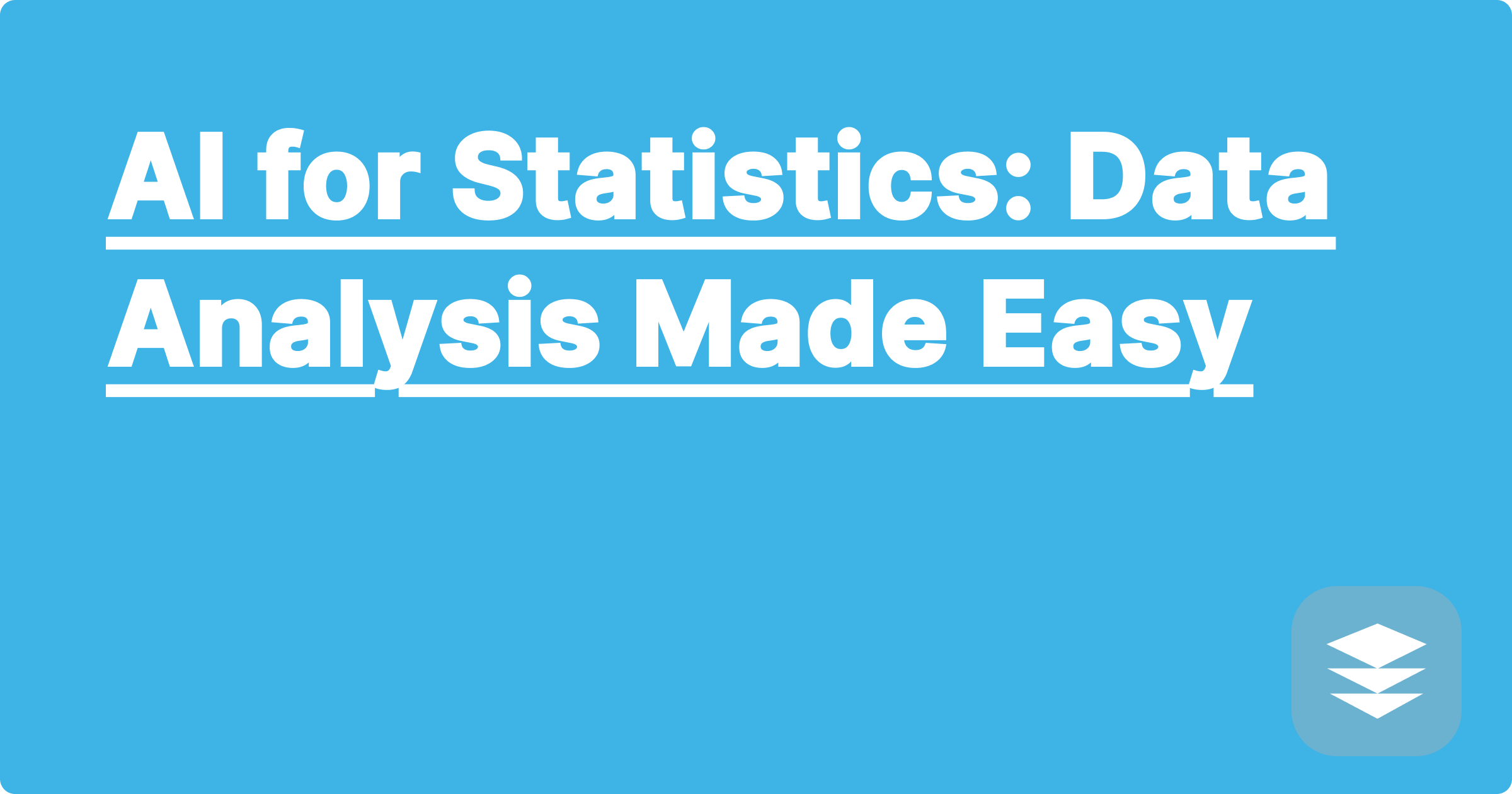
The demanding world of STEM education and research often leaves students feeling overwhelmed. Juggling complex coursework, demanding research projects, and the pressure to maintain a high GPA can be a constant struggle. Thankfully, the rise of artificial intelligence offers a powerful new toolkit for STEM students and researchers, providing innovative ways to streamline their workflow, enhance understanding, and achieve academic success. AI-powered tools are transforming how we learn, analyze data, and conduct research, offering a much-needed lifeline in the face of these challenges. This blog post explores how AI can revolutionize your approach to statistics and data analysis, making the journey through STEM significantly smoother and more rewarding.
Specifically, we'll delve into how AI can personalize your learning experience, optimize your time management, and boost your research efficiency. We'll move beyond simply listing tools and instead focus on practical strategies for integrating these powerful resources into your daily academic life. Imagine having a personalized tutor available 24/7, capable of generating study plans tailored to your specific needs, analyzing your weaknesses, and providing targeted practice. Picture effortlessly navigating complex datasets, extracting meaningful insights with ease, and accelerating your research progress. This is the potential of AI in STEM, and we'll explore how you can harness it to unlock your full academic potential.
STEM fields are inherently data-driven. Students and researchers constantly grapple with statistical analysis, from interpreting experimental results to building complex models. Traditional statistical methods can be time-consuming, requiring significant expertise and often involving tedious calculations. Furthermore, understanding the underlying concepts and applying them correctly can be a major hurdle for many students. The sheer volume of data encountered in modern research can also be daunting, making efficient analysis a critical skill. This complexity can lead to frustration, decreased productivity, and even hinder academic progress. For example, imagine a biology student trying to analyze the results of a complex genetics experiment. They may spend hours manually calculating p-values and interpreting statistical significance, potentially leading to errors and consuming valuable time that could be spent on other critical aspects of their research.
AI offers a transformative solution to these challenges. Platforms like GPAI, a hypothetical advanced AI learning platform, and existing tools like Wolfram Alpha, ChatGPT, and specialized statistical software packages are changing the landscape of data analysis in STEM. GPAI, for instance, can generate personalized learning plans based on your individual strengths and weaknesses in statistics, recommend targeted practice problems, and even provide step-by-step explanations of complex statistical concepts. Wolfram Alpha can perform complex calculations, generate visualizations, and even provide insights into statistical distributions. ChatGPT can help you understand complex research papers by summarizing key findings and explaining statistical methods used. By integrating these tools into your workflow, you can significantly reduce the time spent on tedious calculations, improve your understanding of statistical concepts, and focus on the bigger picture of your research.
Let's consider a practical scenario: analyzing a dataset for a research project. First, upload your data into a platform like GPAI or a specialized statistical software package. GPAI can automatically identify the type of data and suggest appropriate statistical tests. Next, use the platform's built-in functions to perform the necessary calculations and generate visualizations. GPAI can even explain the results in plain language, helping you understand the statistical significance of your findings. If you encounter any conceptual roadblocks, ChatGPT can provide further clarification and context. Finally, use the insights gained to refine your research questions and design further experiments. This streamlined process allows you to focus on the scientific implications of your data rather than getting bogged down in complex calculations.
Consider a physics student modeling the trajectory of a projectile. They can use Wolfram Alpha to calculate the projectile's range, maximum height, and time of flight, given initial conditions like velocity and angle of launch. A chemistry student can use AI-powered molecular modeling software to predict the properties of new compounds, saving valuable lab time and resources. In mathematics, students can use AI tools to verify complex proofs and explore different mathematical concepts. For example, a student struggling with integration can use Wolfram Alpha to step through the integration process, gaining a deeper understanding of the underlying principles.
Integrating AI into your STEM studies requires a strategic approach. First, identify your specific needs and challenges. Are you struggling with understanding statistical concepts? Do you need help with data visualization? Once you've identified your needs, explore the various AI tools available and choose the ones that best address your specific requirements. Don't be afraid to experiment with different platforms and find what works best for you. Remember that AI is a tool, and its effectiveness depends on how you use it. Integrate AI into your existing workflow rather than trying to replace your current methods entirely. For example, use GPAI to generate personalized study plans and track your progress, while continuing to attend lectures and participate in study groups. Finally, stay updated on the latest advancements in AI and continuously explore new ways to leverage these powerful tools for academic success.
Integrating AI-powered tools into your academic life offers numerous benefits. By automating tedious tasks, you can free up valuable time for deeper learning and exploration. Personalized learning plans and targeted practice can help you identify and address your weaknesses, leading to improved grades and a stronger understanding of core concepts. AI can also enhance your research efficiency by streamlining data analysis and providing valuable insights. Start exploring these tools today and discover how they can help you unlock your full academic potential in STEM. Remember, embracing these technological advancements is not about replacing human intellect, but rather augmenting it to achieve greater heights.
AI for Statistics: Data Analysis Made Easy
AI for Simulations: Run Experiments Faster
AI Note Taker: Organize Your Studies
AI Equation Solver: Solve Complex Equations
AI Data Visualizer: Present Your Findings
AI Flashcards: Master Key Concepts
AI Programming Helper: Code Smarter
AI Report Writer: Improve Your Reports